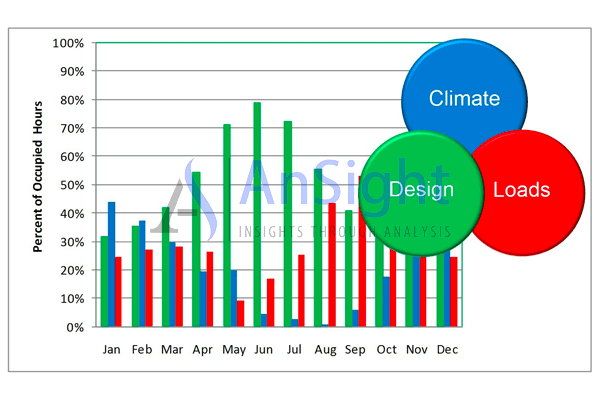Computational Fluid Dynamics (CFD) Analysis of Engineered Natural Ventilation
Several factors affect the engineering of natural ventilation. Design parameters such as the size of windows, location of windows, type of windows, height of the building, the orientation of the building, surrounding terrain, furniture, and space layout affect the airflow through the openings. Whereas sensible heat loads due to lighting, solar heat gains, the heat generated by occupants, and computers affect thermal comfort. A non-optimized natural ventilation design can neutralize the benefits of a “good” climate.
Our proprietary CFD analysis procedures help in the design optimization of naturally ventilated spaces to maximize occupant comfort. Our analysis assesses local climate conditions along with the space cooling loads to quantify the number of hot, cold, and comfortable hours for the occupants for the entire year. These efforts not only help in fine-tuning the design to maximize the comfort of occupants but also sets realistic expectations about thermal comfort from a naturally ventilated space.
AnSights into Engineered Natural Ventilation




We provide insights into
- Assessing climate suitability for natural ventilation.
- Number of hot, cold, and comfortable hours for the occupants.
- Wind patterns surrounding the building.
- Optimized locations and size of the ventilation openings.
- Temperature and airflow analysis.
- Sensible heat load optimization.
- Space layout optimization to minimize airflow obstructions.
- Thermal comfort of occupants (ASHRAE Standard 55).
- Solar chimney analysis and optimization.
Looking for CFD services for Natural Ventilation?
We have several years of experience in providing optimized solutions for a wide variety of engineering problems involving fluid flow, heat transfer, mass transfer, and other similar engineering processes. If you are looking for an expert who can provide you the right solution with the expert CFD knowledge, feel free to contact us.
